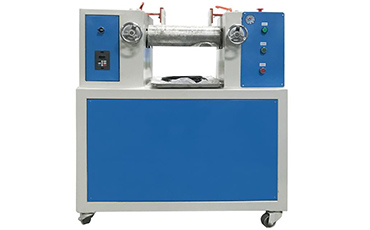In the realm of polymer and rubber processing, precision and efficiency are paramount. The two-roll mill machine emerges as a vital tool in achieving these goals, revolutionizing the production of an array of materials. This article delves into the intricacies of the two-roll mill machine, shedding light on its significance in enhancing efficiency and quality in industrial processes.The two-roll mill machine, a cornerstone of polymer and rubber processing, plays a pivotal role in transforming raw materials into functional products. This machine consists of two horizontally placed cylindrical rollers that rotate in opposite directions. As the material passes between these rollers, it undergoes mechanical and thermal forces that facilitate mixing, dispersion, and homogenization.

Advantages of the Two Roll Mill Machine
Precision Mixing: The two-roll mill machine provides unparalleled control over material blending. Its precise and consistent mixing action results in uniform dispersion of additives, fillers, and colorants, leading to products with consistent properties.
Enhanced Material Properties: Through controlled mechanical and thermal forces, the machine contributes to the uniform distribution of additives and polymers. This yields materials with improved tensile strength, elasticity, and other mechanical properties.
Efficient Processing: The machine's compact design and efficient roller configuration allow for quicker processing times and reduced cycle times, ultimately increasing production capacity.
Versatility: Two-roll mill machines accommodate a wide range of materials, from elastomers and plastics to adhesives and pharmaceutical compounds. This adaptability makes it an indispensable tool for various industries.
Quality Assurance: By ensuring even distribution of components and minimizing material inconsistencies, the two-roll mill machine aids in maintaining product quality and meeting regulatory standards.
Accurate calibration of roller gaps and careful setup are crucial to achieving desired material properties. Regular calibration ensures consistent results.Proper preparation of raw materials, including pre-mixing, ensures a more uniform feed into the machine, enhancing efficiency and reducing processing time.Regular inspection and maintenance of the machine's rollers, bearings, and lubrication systems contribute to its longevity and reliable performance.Adequate training for machine operators is essential to prevent errors, accidents, and ensure smooth operation. Operators should understand the machine's controls, safety protocols, and troubleshooting procedures.
The two-roll mill machine stands as a testament to technological advancements in polymer and rubber processing. Its ability to precisely mix, disperse, and homogenize materials translates to enhanced product quality, operational efficiency, and versatility across industries. As manufacturing evolves, we can anticipate further refinements in two-roll mill machine design, potentially unlocking even greater levels of precision and productivity in material processing.